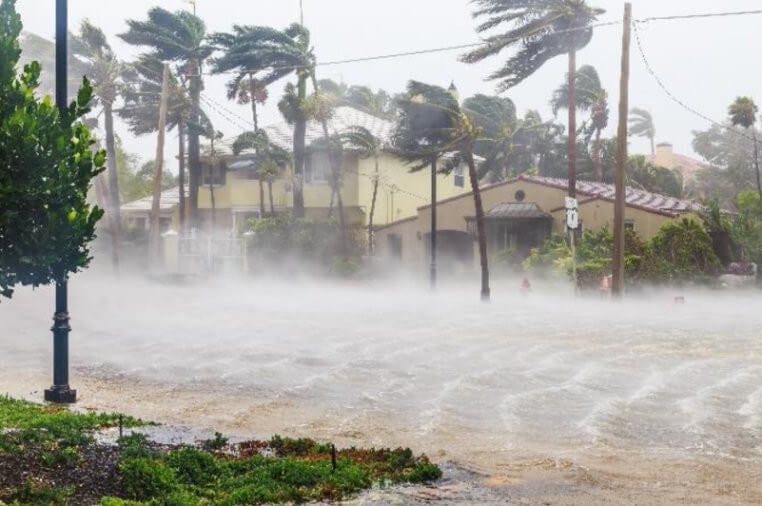
As a Florida resident, have you often observed how our lovely landscapes can turn into something resembling a battlefield after a hurricane impact? Our trees, usually standing tall as the peaceful guardians of our neighborhoods and green spaces, often bear the most visible brunt of the storm season. While some trees weather the storm in one piece, others bend and break when strong winds pick up. Have you ever wondered why this happens? Let’s discuss how your trees respond to hurricane winds—and what we can do to help them make it through the storm more safely with help from an Orlando tree service provider.
How Trees Respond to Hurricanes: The Initial Impact
When the winds are swirling and rain is falling, you might imagine that your trees are sitting there, taking whatever the storm throws at them. That’s not entirely the case! Trees are surprisingly active participants in the hurricane. In response to those powerful winds, they sway—and this movement is key to distributing and lessening the force they face from those gusts. If you’ve ever heard about how skyscrapers are designed to sway with the wind, you can understand the same principle at play. When a tree is capable of flexing without breaking, it is showing off its secret weapon in storm survival.
The Art and Science of Swaying: Resilience in Motion
Your tree’s swaying also isn’t entirely random—it’s a product and stunning example of the engineering embedded in the natural world. Different trees show different capabilities and can withstand more or less bending before they break. This ability in certain tree species plays a key role in how well they withstand strong winds—and determines the environment to which they are suited. Knowing this about the trees around your home can help you make better decisions about which trees to plant and where—especially in hurricane-prone areas like Florida.
Tree Physiology: An Enduring Battle
A tree’s key to storm survival isn’t just surface level. Inside, trees are fighting a different, hidden battle against the wind. Tree structure is a key element to this stability, from the wood of the trunk supplying strength to the root system anchoring the tree to the ground and holding it firm. The overall health of this system is an essential element of this struggle against the storm. In high winds and turbulent conditions, a tree that has been weakened (sometimes less visibly) by disease, decay, or bad pruning can be much more likely to succumb to breakage or uprooting during the storm.
Did you know factors like wood density, joint strength between a tree’s trunk and branches, and even a tree's age and positioning can impact its resistance to wind? Dense wood gives trees increased strength, and sturdy joints help them handle strain brought about by windy conditions. Plus, trees that grow in groups or clusters tend to weather storms better, showing a higher rate of survival than standalone trees.
The Internal Defenses: Wood, Roots, and Resistance
Inside your own body, your skeleton gives you the support you need to stand tall. The tree’s wooden structure acts like your skeleton does, utilizing both strength and flexibility to maintain wind resistance. Different types of trees have wood of varying strengths—and different root systems, too. A tree with shallow or damaged roots is more likely to be displaced during a storm. When soil becomes drenched by the storm, it becomes easier for high winds and stronger gusts to topple certain tree species—and especially those with shallow root systems. To address these issues in overall strength and root conditions, regular check-ups and proper care are essential to making sure your tree is as stable as possible.
The Aftermath: Trees Beyond Their Breaking Point
Despite all these amazing defenses, there’s an eventual limit to how much they can handle. A combination of all the previously mentioned factors can determine how a tree will fare in a storm. Take, for example, a live oak. Its dense wood, deep roots, long lifespan, and wide spread (as opposed to tall height) work in its favor during windy conditions. On the other hand, a tree species like the laurel oak has less-dense wood, shallower roots, a shorter lifespan, and tends to be taller. All these factors can make laurels more prone to breakage and uprooting in a hurricane. However, be sure to note that no species and no tree is completely windproof, so caution should be taken with any trees ahead of storm season.
Relentless hurricane winds can break branches, split trunks, or even cause entire trees to topple over. With fallen branches and trees littering our communities, the aftermath of a storm can sometimes look grim. And, even if a tree makes it through a storm, it could be left with lasting damage and vulnerabilities to future hurricane impacts.
Pre-Hurricane Prep with an Orlando Tree Service
Navigating hurricane season can be stressful in many ways, but don’t worry—we’ve got your back! One of the best ways to prepare your trees for the storm season is to give them a health check-up. Our skilled team of arborists can help identify any hard-to-spot weaknesses—whether that means dead branches, dense canopies, trees too close to buildings, or signs of disease or infestation. When the storm hits, you’ll be glad you caught these issues and helped prevent further damage early!
The science of storm winds and the trees that bear the impact of a hurricane is pretty amazing to behold. When we understand how our trees are resiliently built to navigate the storm, we can consider these factors to help us better prepare for and recover from hurricanes in Florida.
As your premier Orlando tree service provider, Tree Work Now is here to help you on both sides of the hurricane season—from the initial storm prep and maintenance through post-storm cleanup. Let’s prepare for any upcoming hurricanes together as we protect our homes, trees, and the environment at large. Contact us today to plan your inspection!

